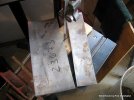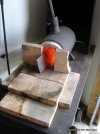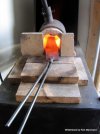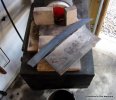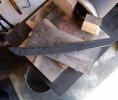Without getting into semantics here,... I'm not sure what the correct technical term is, but a type of "thermal fatigue" or "hot work fatigue" can occur at the surface of the steel from too many heats in conjunction with other stress etc., from forging. I've seen it quite a few times when trying to do intricate forgings and/or monkeying around with it too much on my own work and on other's. It actually becomes visual to the naked eye on the surface of the steel. It first appears as a series of very fine "cracks", "stretch marks", "wrinkles" or "hot fractures" on the surface running perpendicular to the length of the blade, (edge, back). It appears as an odd texture on the surface. A couple times I've seen it so deep and wide you could stick a finger nail in it. Needles to say it can travel deeper into the steel and weakens it, if not ground off.
The more heats or hot working the worse it gets. If it goes too far, it ends up in the scrap pile. If you see it at any stage of the game, it’s a good idea to grind it off before going any further. It's especially important to inspect the surface for it on hammer finished blades.
Every heat can be thought of as a thermal stress cycle... expansion and contraction.
Best not to over work the steel.

